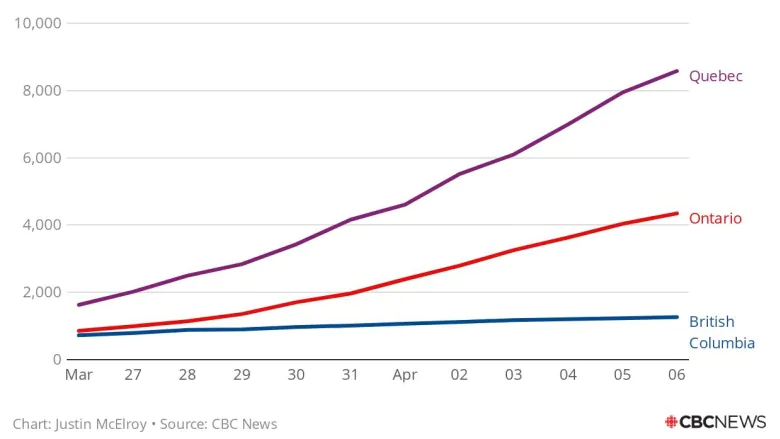The COVID-19 outbreak is currently less severe in British Columbia than in Canada’s two largest provinces. The reasons why are part preparation and part luck, say public health experts.

The COVID-19 outbreak is currently more severe in Canada’s two largest provinces than it is in British Columbia.
That’s not opinion; it’s fact.
Whether you go by confirmed cases or hospitalizations, by raw numbers or a per capita comparison, the virus has steadily grown in Ontario and Quebec.
But in B.C., hospitalizations and active cases have been flat for the last week. The disease growth curve, at least at this point, has been flattened.
So, what’s the explanation?
“It’s very hard to know exactly why,” said B.C.’s chief medical health officer, Dr. Bonnie Henry, when asked about the difference on Monday. “Some parts of it are luck, and some parts of it are being prepared.”
It’s undoubtedly true that B.C. was able to learn from having a few isolated cases in January and February. It’s also true the province has been lucky not to have a viral “super-spreader,” as has been the case in other places.
However, there’s a little bit more to it than that.
Preparation, preparation, preparation
Dr. David Fisman, an epidemiology professor at the University of Toronto, said British Columbia’s institutions for disease control have long been a model for the rest of the country.
“You’ve got a functioning public health system, with integration of lab and epidemiology and service in British Columbia,” he said. “Here in Ontario, we have had difficulties with public health leadership culture for a long time.”
Fisman says B.C. was able to, as Henry pu

